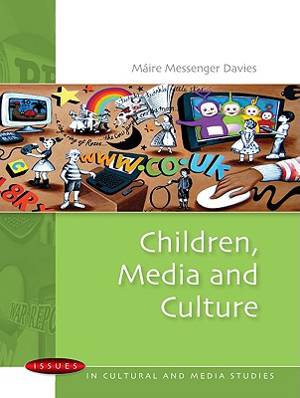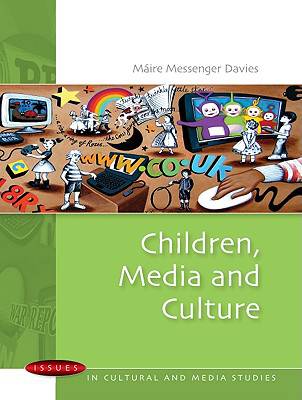
- Retrait gratuit dans votre magasin Club
- 7.000.000 titres dans notre catalogue
- Payer en toute sécurité
- Toujours un magasin près de chez vous
- Retrait gratuit dans votre magasin Club
- 7.000.0000 titres dans notre catalogue
- Payer en toute sécurité
- Toujours un magasin près de chez vous
Description
Professor Dafna Lemish, Editor, Journal of Children and Media
"An ambitious and quite helpful synthesis of scholarly research, policy reports, professional opinion and personal impressions on what it has meant to be represented as a child in relation to different cultural and historical contexts and media forms up to the present day... I commend the author for the lively and clear, yet scholarly and eloquent quality of her prose. Would that more academics were also trained appreciators of literature and former journalists!"
Mark Evan Nelson, Assistant Professor in English Language and Literature at the National Institute of Education, Singapore"
Childhood and children's culture are regularly in the forefront of debates about how society is changing - often, it is argued, for the worse. This book addresses the continuing concerns around media 'effects' and critically examines the view that technology has dramatically changed modern children's lives. This book engages with and seeks to broaden the public debate about the role of popular media in children's lives. It considers how public anxieties regarding the harmful influences of the media are heightened at times of rapid technological change. This change is most visible in the appearance of new media technology - currently including digital television; the Internet; computer games, mobile phones and i-pods, but also, in the past, print material, films, radio and broadcast television, when they were new.
Written in a lively and accessible style, the book discusses various genres, including television and the Internet, children's books, fairy tales, children in art, playground games, and film. Case studies include Disney, Harry Potter; Teletubbies, Sesame Street, Cbeebies and The Secret Garden.
Essential reading for media students, this book situates the study of childhood and the media within a framework of different disciplines, including historical, sociological, psychological and political approaches.
Spécifications
Parties prenantes
- Auteur(s) :
- Editeur:
Contenu
- Nombre de pages :
- 258
- Langue:
- Anglais
- Collection :
Caractéristiques
- EAN:
- 9780335229208
- Date de parution :
- 01-08-10
- Format:
- Livre broché
- Format numérique:
- Trade paperback (VS)
- Dimensions :
- 168 mm x 224 mm
- Poids :
- 458 g

Les avis
Nous publions uniquement les avis qui respectent les conditions requises. Consultez nos conditions pour les avis.






